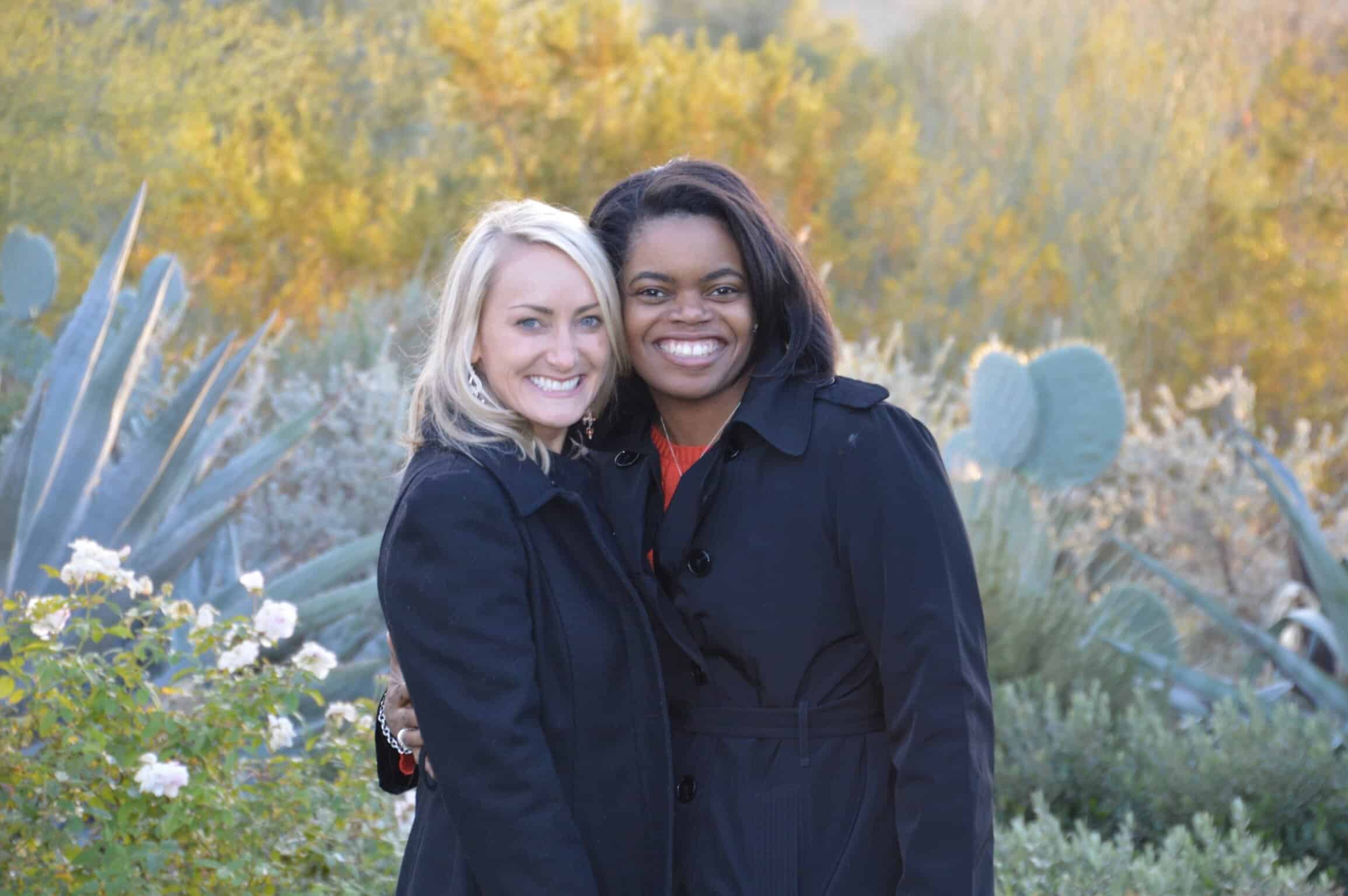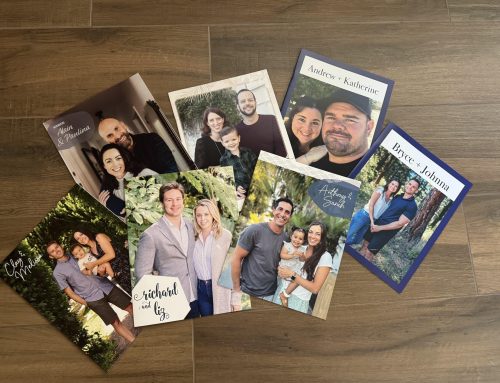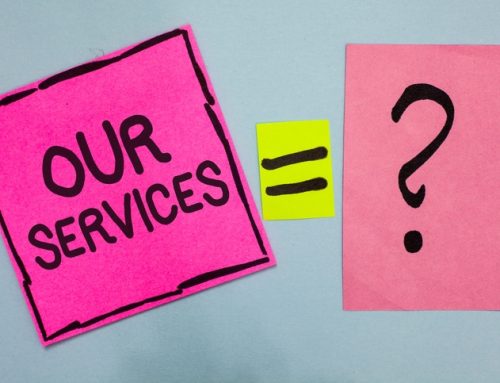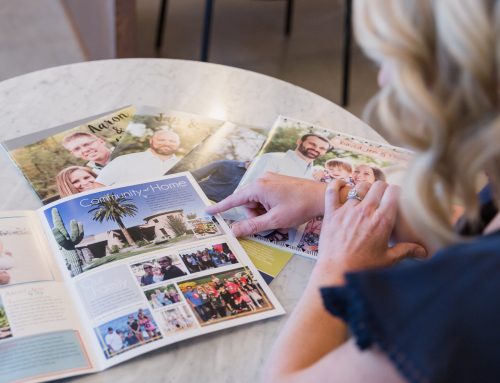
As you probably know, February is Black History Month. I often feature other writers or adoptees to talk about race and transracial adoption, since I can’t speak to that from personal experience. I was admittedly naïve about transracial adoption before my own personal adoption experience, even though I always considered myself someone that was very open on race, in my words “color-blind”.
First off, a little about me. I grew up in the suburbs of Tucson, Arizona. There were not many African-American kids in my schools. However, I always had a diverse group of friends, maybe because I sought out people that were different from me. I was an athlete in high school and later in college in Texas, and had many friends who were Black or Hispanic. After college I worked in college athletics, which typically included a very diverse demographic. After working in Football Operations at UNC-Chapel Hill, I later returned to work at the University of Arizona as the Director of Women’s Basketball Operations. It was in this job, now almost 17 years ago, that I met one of my best friends, Lisa, an African-American woman who was a Ph.D. student at UA, but also working with student-athletes as an academic counselor. Lisa and I became fast friends and have stayed close even when I changed career paths to attend law school in Phoenix. I was a bridesmaid in her wedding, and later she would help me pick out my wedding dress after I got engaged, throw me a bridal shower, and later her beautiful daughter would be the flower girl in my wedding.
After Ray and I got married, we started to pursue adoption as we underwent fertility treatments, excited to start our family either way. As is typical in the adoption process, Ray and I started talking about adoption preferences and what we would be open to in our own adoption. We talked about race, and both of us were open to adopting a child of another race, but I was definitely more open to the idea. I recall Ray saying he was concerned that he couldn’t be a great role model to an African-American boy in particular, since he couldn’t relate personally to the racism that he would feel in our country. But we didn’t talk much more about it and didn’t have much education on the subject before diving into our journey. When we made our adoption profile book, we were advised to include diverse friends and family if we were open to adopting transracially. So in our profile book I naturally featured Lisa, as well as the many Asian extended family members I have due to international adoptions in many generations of my family.
As I’ve talked about before, we matched with an expectant mom considering adoption after being certified to adopt for only a few days. The expectant mom who chose us was Caucasian. That adoption disrupted in dramatic fashion a few months later (she didn’t decide to parent, it disrupted for other reasons), and after dealing with the grief and stress of that we went live again. I feel like we presented to so many adoption opportunities over the next two months. I vividly recall praying so hard after presenting to an expectant mom of African-American twins that were being delivered that night right here in Arizona. I was devastated when we weren’t chosen, because for some reason I had felt those babies might be meant for my arms. Ultimately, we were not chosen for any of those biracial or African American opportunities we presented to, maybe my naivety about transracial adoption came through the pages of my profile book…
In early December 2015, after all of those “No’s”, we were chosen by a Caucasian expectant mom due very soon with a baby girl. Our daughter Cora was born a week later, with very fair skin like her first mama’s (and mine) and a little bit of curly auburn hair. That week we would also find out that we were pregnant. And while it would be months before we believed that pregnancy would stick, both of those things happening in the same week dramatically reduced the chances that I would ever adopt transracially.
I was one of those people who likely used the term “color blind” when I thought of race and adoption. I had witnessed blatant racism in North Carolina, something that really disgusted me and was part of the reason I returned to the West, so it wasn’t that I didn’t know racism existed. But I hadn’t seen racism like that quite so openly in Arizona, or even in Texas, and I thought in the Southwest transracial adoption wouldn’t be that difficult. When considering transracial adoption, I felt like my love and my own openness on race would be enough. I told myself that my child would see people who looked like them in Lisa, her family, and other mutliracial friends I had, and I lived in a big city where they would see diversity everywhere. But I didn’t dig in on the subject of transracial adoption myself until I started Purl and educated myself like I SHOULD have before I started my journey. But oh how naïve I felt when I started to listen to the voices of transracial adoptees on this subject.
Luckily, I now have found great resources to recommend to my clients considering transracial adoption, particularly those from the perspective of transracial adoptees. Torie DiMartile of Wreckage and Wonder wrote an insightful piece for Purl educating hopeful adoptive parents about what they should do if they plan to adopt transracially, and she offers many other resources on her website and Instagram page (including a free Black History Guide this month). Hannah Matthews of Hey_Tra has a podcast and offers many other resources for families adopting transracially (and also has an inexpensive downloadable guide available for Black History Month). I have received both of those guides and have learned so much about black history this month that was never taught to me in school. There is also Angela Tucker of The Adopted Life, who has a documentary and other resources about transracial and open adoption. There are also good books, blogs and other resources from other perspectives: White Sugar Brown Sugar, Tutus and Tennis Shoes, and Life With Curlz, among others. There are also great resources including the following books on transracial adoption and hair care:
-
I’m Chocolate, You’re Vanilla: Raising Healthy Black and Biracial Children in a Race-Conscious World
-
In Their Own Voices: Transracial Adoptees Tell Their Stories
-
Come Rain or Come Shine: A White Parent’s Guide to Adopting and Parenting Black Children
While my focus this month is on African-American transracial adoptees due to Black History Month, there are other non-black transracial adoptees speaking on the subject as well, Cameron Lee Small of Therapy Redeemed is a therapist that helps adoptees and adoptive parents equip themselves to deal with the complexities of adoption. Chinese Transracial Adoptee Lillian Schmaltz of Adoptee Lily also has a blog and podcast on her experiences.
Don’t be naïve like I was. Make sure you’re ready to adopt transracially before you dive in. Make sure you can do the hard things that might be necessary to do what’s best for your child and his/her identity. Luckily for those children whose families didn’t pick me, (and for Lisa, who would have ended up with a lot of pressure on her) we didn’t adopt transracially, but I hope to direct you to others who can prepare you better than I can!

As you probably know, February is Black History Month. I often feature other writers or adoptees to talk about race and transracial adoption, since I can’t speak to that from personal experience. I was admittedly naïve about transracial adoption before my own personal adoption experience, even though I always considered myself someone that was very open on race, in my words “color-blind”.
First off, a little about me. I grew up in the suburbs of Tucson, Arizona. There were not many African-American kids in my schools. However, I always had a diverse group of friends, maybe because I sought out people that were different from me. I was an athlete in high school and later in college in Texas, and had many friends who were Black or Hispanic. After college I worked in college athletics, which typically included a very diverse demographic. After working in Football Operations at UNC-Chapel Hill, I later returned to work at the University of Arizona as the Director of Women’s Basketball Operations. It was in this job, now almost 17 years ago, that I met one of my best friends, Lisa, an African-American woman who was a Ph.D. student at UA, but also working with student-athletes as an academic counselor. Lisa and I became fast friends and have stayed close even when I changed career paths to attend law school in Phoenix. I was a bridesmaid in her wedding, and later she would help me pick out my wedding dress after I got engaged, throw me a bridal shower, and later her beautiful daughter would be the flower girl in my wedding.
After Ray and I got married, we started to pursue adoption as we underwent fertility treatments, excited to start our family either way. As is typical in the adoption process, Ray and I started talking about adoption preferences and what we would be open to in our own adoption. We talked about race, and both of us were open to adopting a child of another race, but I was definitely more open to the idea. I recall Ray saying he was concerned that he couldn’t be a great role model to an African-American boy in particular, since he couldn’t relate personally to the racism that he would feel in our country. But we didn’t talk much more about it and didn’t have much education on the subject before diving into our journey. When we made our adoption profile book, we were advised to include diverse friends and family if we were open to adopting transracially. So in our profile book I naturally featured Lisa, as well as the many Asian extended family members I have due to international adoptions in many generations of my family.
As I’ve talked about before, we matched with an expectant mom considering adoption after being certified to adopt for only a few days. The expectant mom who chose us was Caucasian. That adoption disrupted in dramatic fashion a few months later (she didn’t decide to parent, it disrupted for other reasons), and after dealing with the grief and stress of that we went live again. I feel like we presented to so many adoption opportunities over the next two months. I vividly recall praying so hard after presenting to an expectant mom of African-American twins that were being delivered that night right here in Arizona. I was devastated when we weren’t chosen, because for some reason I had felt those babies might be meant for my arms. Ultimately, we were not chosen for any of those biracial or African American opportunities we presented to, maybe my naivety about transracial adoption came through the pages of my profile book…
In early December 2015, after all of those “No’s”, we were chosen by a Caucasian expectant mom due very soon with a baby girl. Our daughter Cora was born a week later, with very fair skin like her first mama’s (and mine) and a little bit of curly auburn hair. That week we would also find out that we were pregnant. And while it would be months before we believed that pregnancy would stick, both of those things happening in the same week dramatically reduced the chances that I would ever adopt transracially.
I was one of those people who likely used the term “color blind” when I thought of race and adoption. I had witnessed blatant racism in North Carolina, something that really disgusted me and was part of the reason I returned to the West, so it wasn’t that I didn’t know racism existed. But I hadn’t seen racism like that quite so openly in Arizona, or even in Texas, and I thought in the Southwest transracial adoption wouldn’t be that difficult. When considering transracial adoption, I felt like my love and my own openness on race would be enough. I told myself that my child would see people who looked like them in Lisa, her family, and other mutliracial friends I had, and I lived in a big city where they would see diversity everywhere. But I didn’t dig in on the subject of transracial adoption myself until I started Purl and educated myself like I SHOULD have before I started my journey. But oh how naïve I felt when I started to listen to the voices of transracial adoptees on this subject.
Luckily, I now have found great resources to recommend to my clients considering transracial adoption, particularly those from the perspective of transracial adoptees. Torie DiMartile of Wreckage and Wonder wrote an insightful piece for Purl educating hopeful adoptive parents about what they should do if they plan to adopt transracially, and she offers many other resources on her website and Instagram page (including a free Black History Guide this month). Hannah Matthews of Hey_Tra has a podcast and offers many other resources for families adopting transracially (and also has an inexpensive downloadable guide available for Black History Month). I have received both of those guides and have learned so much about black history this month that was never taught to me in school. There is also Angela Tucker of The Adopted Life, who has a documentary and other resources about transracial and open adoption. There are also good books, blogs and other resources from other perspectives: White Sugar Brown Sugar, Tutus and Tennis Shoes, and Life With Curlz, among others. There are also great resources including the following books on transracial adoption and hair care:
-
I’m Chocolate, You’re Vanilla: Raising Healthy Black and Biracial Children in a Race-Conscious World
-
In Their Own Voices: Transracial Adoptees Tell Their Stories
-
Come Rain or Come Shine: A White Parent’s Guide to Adopting and Parenting Black Children
While my focus this month is on African-American transracial adoptees due to Black History Month, there are other non-black transracial adoptees speaking on the subject as well, Cameron Lee Small of Therapy Redeemed is a therapist that helps adoptees and adoptive parents equip themselves to deal with the complexities of adoption. Chinese Transracial Adoptee Lillian Schmaltz of Adoptee Lily also has a blog and podcast on her experiences.
Don’t be naïve like I was. Make sure you’re ready to adopt transracially before you dive in. Make sure you can do the hard things that might be necessary to do what’s best for your child and his/her identity. Luckily for those children whose families didn’t pick me, (and for Lisa, who would have ended up with a lot of pressure on her) we didn’t adopt transracially, but I hope to direct you to others who can prepare you better than I can!



